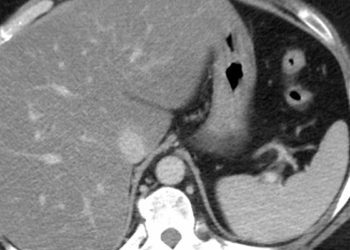Sleep disturbances in older adults linked to higher rates of multimorbidity
1. Moderate to severe sleep disturbances were associated with higher accumulation rates of chronic disease in older adults.
2. Moderate to severe sleep disturbances were separately associated with higher accumulation rates of neuropsychiatric and musculoskeletal conditions, but not of cardiovascular diseases.
Evidence Rating Level: 2 (Good)
Study Rundown: Sleep disturbances affect half of older adults; they are associated with higher healthcare costs, risk for dementia, and incidence of falls, deaths, and accidents. One cross-sectional study has shown a linear, dose-dependent association between the number of chronic conditions and the number of sleep disturbances, while others have shown that sleep is one of multiple health-promoting behaviours associated with multimorbidity. To expand upon prior literature, this cohort study explored the association between sleep disturbances and rate of multimorbidity development. Compared to their counterparts with no sleep disturbances, there was a significant association in patients with moderate-severe sleep disturbances experiencing a higher rate of comorbidity accumulation of any chronic disease. Moreover, this association remained significant in models analyzing moderate-severe sleep disturbances with higher accumulation rates of neuropsychiatric and musculoskeletal conditions separately. This association was not found with cardiac conditions. This may be the result of excluding patients with baseline multimorbidity, as patients with cardiovascular diseases often have coexisting conditions. However, measure of sleep was self-reported and measured at one point of follow-up; objective and continuous monitoring may provide more reliable data. Additionally, the SNAC-K participants included were wealthier on average than other parts of Sweden; better lifestyles and reduced risk factors may impact this study’s external validity. While individuals with multimorbidity were excluded at baseline to limit reverse causality, these measured sleep disturbances may be symptoms of already established and/or undiagnosed disorders, such as arthritides or depression. Nonetheless, this population-based, longitudinal study was performed with a 9-year follow-up and adjusted for potential confounders such as health behaviours, depression scores, and psychotropic medications. This study supports using sleep disturbances as a potential proxy for biological vulnerability, which may identify individuals more likely to experience higher rates of multi-comorbidity accumulation and allow for appropriate interventions.
Click to read the study in BMC Medicine
Relevant Reading: Chronic Conditions and Sleep Problems among Adults Aged 50 years or over in Nine Countries: A Multi-Country Study
In-Depth [population-based, longitudinal cohort study]: The subsample population was 1189 participants (mean age 67.5 years, 58% female) without multimorbidity at baseline (<2 chronic diseases), taken from a larger ongoing population-based study, SNAC-K (the Swedish National study of Aging and Care in Kungsholmen). SNAC-K follows adults aged 60 years and older living in both the community and in institutions in Kungsholmen, Stockholm between 2001-2004, following 3353 participants. The number of chronic conditions at baseline and at follow-ups were assessed every six years in younger participants, while older participants (> 78 years) were assessed every three years. Baseline sleep disturbances were categorized into none, mild, and moderate-severe based on the Comprehensive Psychiatric Rating Scale. Linear mixed models, repeated individually for cardiovascular, neuropsychiatric, and musculoskeletal diseases only, analyzed the longitudinal associations between baseline sleep disturbances and speed of chronic condition accumulation over nine years. These models were adjusted for covariates cumulatively, including for sex, age, and education, health behaviours (ie smoking, drinking, physical activity), presence of depression, pain, psychotropic medication, and baseline chronic disease. β-coefficients describe the effect of each level of sleep disturbance on the average increase in the number of chronic disease per year. Chronic disease accumulation rates of participants with no sleep disturbances were used as a reference. Moderate-severe sleep disturbances, or “sleep reduced or broken by at least two hours” and “less than two hours or three hours of sleep” were significantly associated with a higher rate of comorbidity accumulation of any chronic disease (β/year: 0.142, p=0.008), as well as with higher accumulation rates of neuropsychiatric (β/year: 0.041, p=0.016) and musculoskeletal (β/year: 0.038, p=0.025) conditions separately. A similar association was not found with cardiovascular disease accumulation rates (β/year: 0.001, p=0.995). Associations between chronic disease accumulation and mild sleep disturbances never reached significance. No significant interactions were found with age, sex, or psychotropic drug use.
Image: PD
©2020 2 Minute Medicine, Inc. All rights reserved. No works may be reproduced without expressed written consent from 2 Minute Medicine, Inc. Inquire about licensing here. No article should be construed as medical advice and is not intended as such by the authors or by 2 Minute Medicine, Inc.







